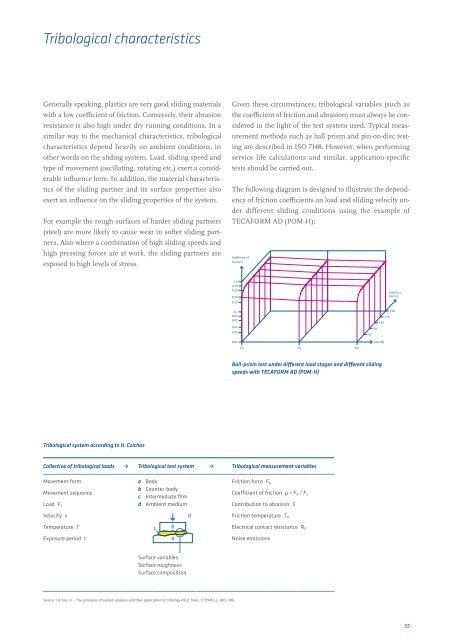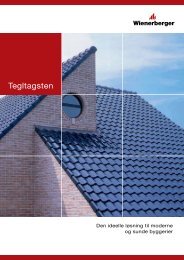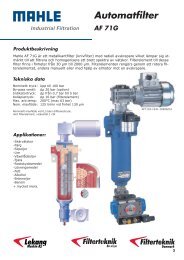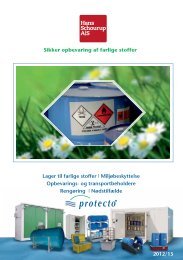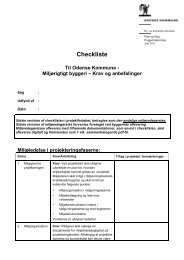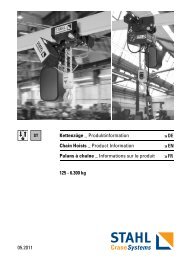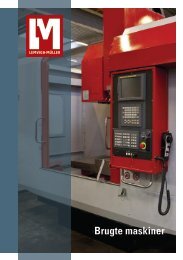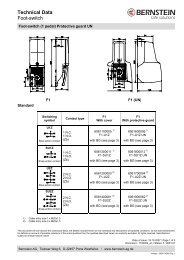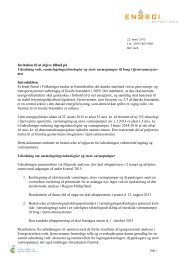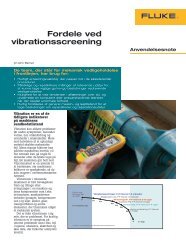Engineering plastics â The Manual - F.wood-supply.dk
Engineering plastics â The Manual - F.wood-supply.dk
Engineering plastics â The Manual - F.wood-supply.dk
You also want an ePaper? Increase the reach of your titles
YUMPU automatically turns print PDFs into web optimized ePapers that Google loves.
Tribological characteristics<br />
Generally speaking, <strong>plastics</strong> are very good sliding materials<br />
with a low coefficient of friction. Conversely, their abrasion<br />
resistance is also high under dry running conditions. In a<br />
similar way to the mechanical characteristics, tribological<br />
characteristics depend heavily on ambient conditions, in<br />
other words on the sliding system. Load, sliding speed and<br />
type of movement (oscillating, rotating etc.) exert a considerable<br />
influence here. In addition, the material characteristics<br />
of the sliding partner and its surface properties also<br />
exert an influence on the sliding properties of the system.<br />
For example the rough surfaces of harder sliding partners<br />
(steel) are more likely to cause wear in softer sliding partners.<br />
Also where a combination of high sliding speeds and<br />
high pressing forces are at work, the sliding partners are<br />
exposed to high levels of stress.<br />
Given these circumstances, tribological variables (such as<br />
the coefficient of friction and abrasion) must always be considered<br />
in the light of the test system used. Typical measurement<br />
methods such as ball prism and pin-on-disc testing<br />
are described in ISO 7148. However, when performing<br />
service life calculations and similar, application-specific<br />
tests should be carried out.<br />
<strong>The</strong> following diagram is designed to illustrate the dependency<br />
of friction coefficients on load and sliding velocity under<br />
different sliding conditions using the example of<br />
TECAFORM AD (POM-H):<br />
Coefficient of<br />
friction f<br />
1,0<br />
0,70<br />
0,50<br />
0,30<br />
0,20<br />
Velocity v<br />
[mm/s]<br />
0,1<br />
0,07<br />
0,05<br />
0,03<br />
0,02<br />
0,01<br />
210<br />
170<br />
130<br />
90<br />
50<br />
Last [N]<br />
1,0<br />
3,0<br />
6,0<br />
Ball-prism test under different load stages and different sliding<br />
speeds with TECAFORM AD (POM-H)<br />
Tribological system according to H. Czichos<br />
Collective of tribological loads<br />
Movement form<br />
Movement sequence<br />
Load F S<br />
Velocity v<br />
Temperature T<br />
Exposure period t<br />
• Tribological test system<br />
a Body<br />
b Counter-body<br />
c Intermediate film<br />
d Ambient medium<br />
d<br />
c b<br />
a<br />
• Tribological measurement variables<br />
Friction force F R<br />
Coefficient of friction µ = F R / F S<br />
Contribution to abrasion S<br />
Friction temperature T R<br />
Electrical contact resistance R Ü<br />
Noise emissions<br />
Surface variables:<br />
Surface roughness<br />
Surface composition<br />
Source: Czichos, H. – <strong>The</strong> principles of system analysis and their application to tribology ASLE Trans. 17 (1974), p. 300 / 306<br />
55


